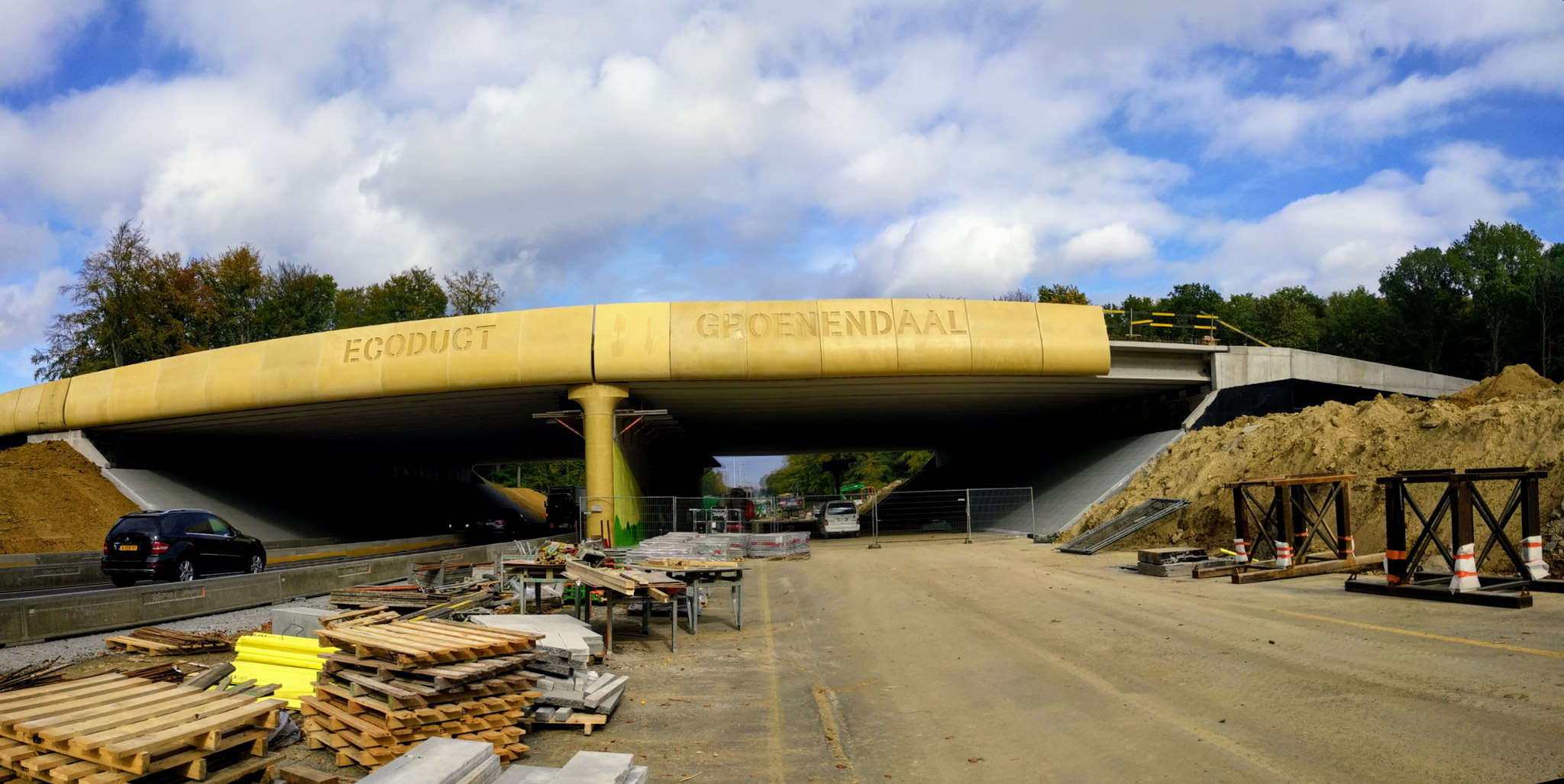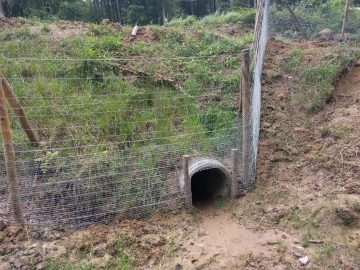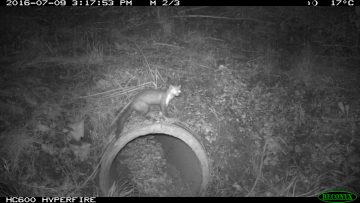The innovative rewilding efforts of the LIFE+OZON project, a member of the European Rewilding Network, are already benefitting biodiversity in the Sonian Forest, located just outside Brussels. These efforts will culminate in the opening of a green bridge this summer.

Located on the edge of Brussels, the 4400-hectare Sonian Forest (Foret de Soignes) is an ancient, unique and highly diversified expanse of beech woodland and Natura 2000 conservation site. It includes five nature reserves, two forest reserves and two archaeological reserves. A popular destination for both visitors and local residents, it is home to populations of roe deer, red fox, pine marten, beech marten and European beaver, as well as 18 species of bat, palmate newts and an endemic ground beetle.
The Sonian Forest may be rich in wild nature, but its location in the middle of a densely populated area poses numerous conservation challenges. It also gives rewilding efforts here a unique character. With the land intersected by numerous roads and railway lines, the main issue to contend with is a phenomenon known as ecological fragmentation.
The LIFE+OZON project, which kicked off in 2013 and finishes this year, is working to reconnect these fragmented habitats using green infrastructure. It also aims to protect biodiversity through forest management (such as the restoration of forest edges along the Brussels Ring Road and the creation of open, grazed areas), and by redirecting recreational activities to less sensitive forest areas.
The project is a collaboration between the Agency for Nature and Forest, the Agency for Roads and Traffic, the Environment Department of the Flemish government and Brussels Environment. The municipalities of Hoeilaart, Overijse and Tervuren cofinance the project. The ‘Département de la Nature et des Forêts’ (Wallonia), the United Nations Environment Program and the municipality of Sint-Genesius Rode support the project symbolically, while the project also runs with the support of the European structural fund Life+.
“The project’s biggest challenge is the Brussels Ring Road, although a number of other transport arteries also cut right through the forest,” explains project supporter Andreas Baele. “Monitoring of road kill of the most common species (such as roe deer and red fox) shows that more than 50 animals die as a result of traffic collisions every year.”

Over the past few years, work carried out as part of the LIFE+OZON project has seen numerous efforts made to reconnect the Sonian Forest’s divided areas. In Tervuren, for example, two tunnels have been constructed under one of the roads so that amphibians can cross without danger. Traffic reflectors have also been installed to warn animals about the presence of roads, while over 20 kilometres of roadside fencing and other tunnels under railway lines now divert animals away from dangerous transport links and provide them with safe passage.
The Sonian Forest’s most audacious piece of LIFE+OZON infrastructure is the 60-metre wide “Ecoduct Groenendaal”. The first ever wildlife crossing over the Brussels Ring Road, this green bridge is located in the Groenendaal area. With construction of the 6 million euro structure starting in 2016, it will officially be opened on June 3 this year.
The top of the ecoduct, which is accessed via a gentle soil ramp, is currently being planted with vegetation. It will also boast dead wood and a chain of ponds to aid the movement of amphibians.
“The objective is for animals to treat the ecoduct like any other piece of wild land,” says Baele.

Even before the Ecoduct Groenendaal is finished, the efforts of the LIFE+OZON project are aready bearing fruit. As forest areas become reconnected and disturbance by human activity is lessened (signposted trails now guide those visiting the forest for recreational purposes away from vulnerable areas), so populations of roe deer, red fox and wild boar are increasing. A badger was recently sighted in the forest for the first time since 1993.
In 2014 the project also saw forest managers introduce four Scottish highland cattle into an area of the forest. These are kept in a field near Groenendaal, preventing it from overgrowing and helping to boost local biodiversity through natural grazing. There are plans to introduce eight more cattle in the spring.
The LIFE+OZON project has been a member of the European Rewilding Network (ERN) since the beginning of 2017.

“Being part of the network and sharing knowledge with other rewilding initiatives is really important for us,” says Baele. “We are really looking forward to the webinar on natural grazing at the end of February.”
Rewilding Europe is part of a burgeoning pan-European rewilding movement which has seen many impressive and inspiring initiatives develop over recent years. With rewilding-related projects continuing to multiply and flourish across the continent, the objective of the ERN is to connect, support and strengthen them. Members meet regularly – usually via online seminars and the recently launched ERN Forum – to share knowledge, insight and examples of best practice.
Rewilding Europe extends a warm welcome to all rewilding initiatives and encourages them to apply for membership of the ERN.
- Read more about the Sonian Forest project.
- Read more about the European Rewilding Network.
- To attend the official Ecoduct Groenendaal opening, please contact Andreas Baele.
